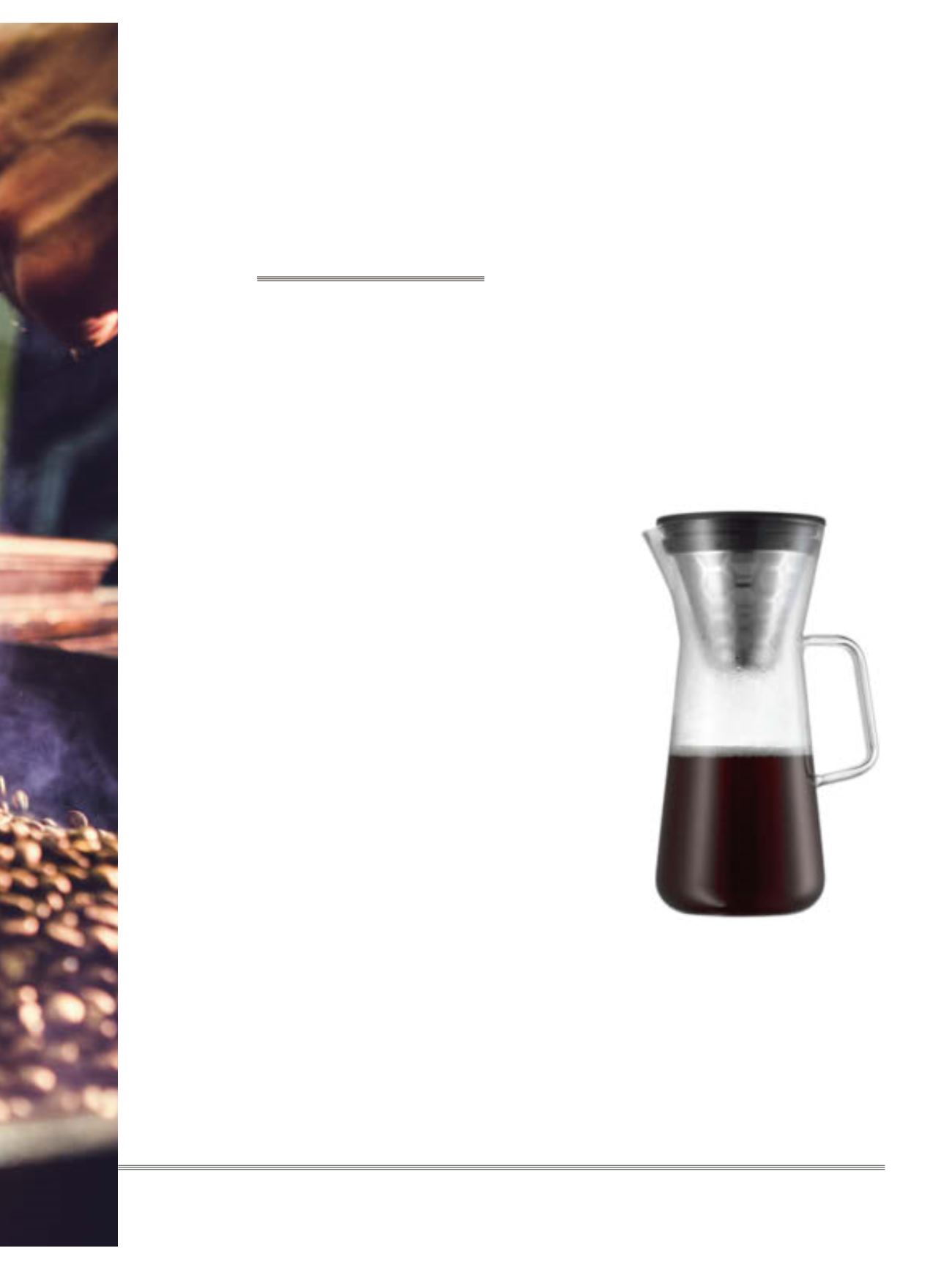

THE RIGHT ANGLE
AT THE RIGHT TIME
MANUAL
filters should
have a funnel wall that is
as steep as possible, as this
increases water motion
during pouring. Preparation
should not, however, take
longer than three minutes
– otherwise the coffee
becomes bitter.
The
best
of the
bean
CO F F E E CU L T UR E HA S L ONG S I NC E EM-
B R A C E D T H E I D E A O F TA K I NG I T S L OW.
GOURME T S A R E R E D I S COV E R I NG T H E HOT
P I C K -ME - U P AND HOW TO P R E PA R E I T .
E N J OYME N T
B
arista Robin pours the 93°C water from a pot
with a delicate curved neck over the freshly
ground coffee in the funnel in slow, circular
motions. He carefully moistened the paper filter
with hot water beforehand. The finished coffee slowly
trickles into a sleek glass carafe before he serves it on a
small wooden tray without any milk or sugar. A guest in
the Hamburg Elbgold coffee bar ordered a Rwandan coffee
brewed with a manual filter – also called a pour over
– and he now tentatively holds the cup to his nose. He
smells a complex aromatic blend of redcurrants, apricots,
caramel, almond and honey. The coffee feels pleasantly
soft and mild on the tongue and palate. Coffee tasting,
which is reminiscent of wine tasting, has now become
established practice in many cafés and brew bars in big
cities around the world. “The desire to slow down and the
trend towards mindfulness have also reached the world
of coffee,” says Holger Preibisch, President of the German
Coffee Association. “Many people want to enjoy coffee
again with greater awareness. They therefore appreciate
coffee preparation that takes time and requires particular
expertise in coffee varieties, water temperatures and
degrees of grinding.”
Many smaller roasting plants in particular have already
specialised in buying the best beans directly from coffee
farmers in Rwanda, Ethiopia and Brazil at fair prices.
Similar to wine, the idea behind the further processing of
raw coffee is to identify the best characteristics of origin
and variety and transfer them to the coffee cup with as
few changes as possible. There are about twice as many
coffee bean aromas as there are wine aromas. Not only do
the nature and duration of roasting play a key role; the
specific brewing method does too. Experts get the best
out of the bean with precision and the right accessories.
Dish
by WMF
|
81
















